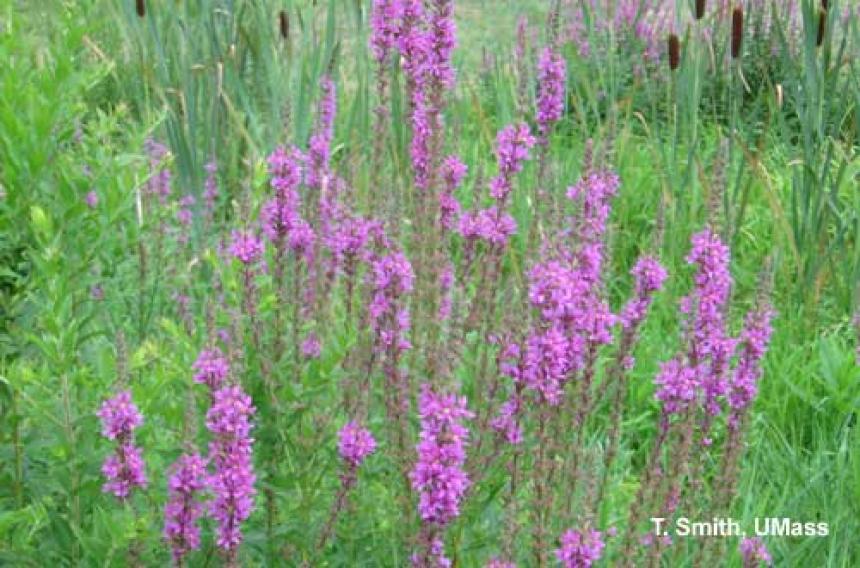Purple loosestrife (Lythrum salicaria) is a perennial in the loosestrife family, with a square, woody stem and opposite or whorled leaves that has an upright growth habit. Leaves are lance-shaped, stalkless, and heart-shaped or rounded at the base. Plants are usually covered by a downy pubescence. Loosestrife plants grow from four to ten feet high, depending upon conditions, and produce a showy display of magenta-colored flower spikes throughout much of the summer. Flowers have five to seven petals. Mature plants can have from 30 to 50 stems arising from a single rootstock.
Purple loosestrife adapts readily to natural and disturbed wetlands. As it establishes and expands, it outcompetes and replaces native grasses, sedges, and other flowering plants that provide a higher quality source of nutrition for wildlife. The highly invasive nature of purple loosestrife allows it to form dense, homogeneous stands that restrict native wetland plant species, including some federally endangered orchids, and reduce habitat for waterfowl.
Purple loosestrife is on the prohibited plant list and effective January 1, 2009, all plants on the prohibited list are banned from importation, propagation or sale within the state of Massachusetts. This ban also covers the purchase and distribution of these plants and related activities.
Invasive plants are an important issue in Massachusetts and retail garden centers should be aware of what plants are considered to be invasive. Invasive plants, as defined by the Massachusetts Invasive Plant Group, are "plants that have spread into native or minimally managed plant systems in Massachusetts. These plants cause economic or environmental harm by developing self-sustaining populations and becoming dominant and/or disruptive to those systems." For a list of invasive plants, including banned plants in Massachusetts and more information, see: Massachusetts Department of Agricultural Resources - Massachusetts Prohibited Plants
Biocontrol of Purple loosestrife: In 2000 the Department of Fish and Wildlife Division of Ecological Restoration intitiated a pilot Purple loosestrife biocontrol project. As of 2008, DER has facilitated beetle releases at 43 sites with the help of volunteers. Several sites have shown successful reductions after multiple releases over 3-4 years according the Purple Loosestrife Biocontrol Project website.
